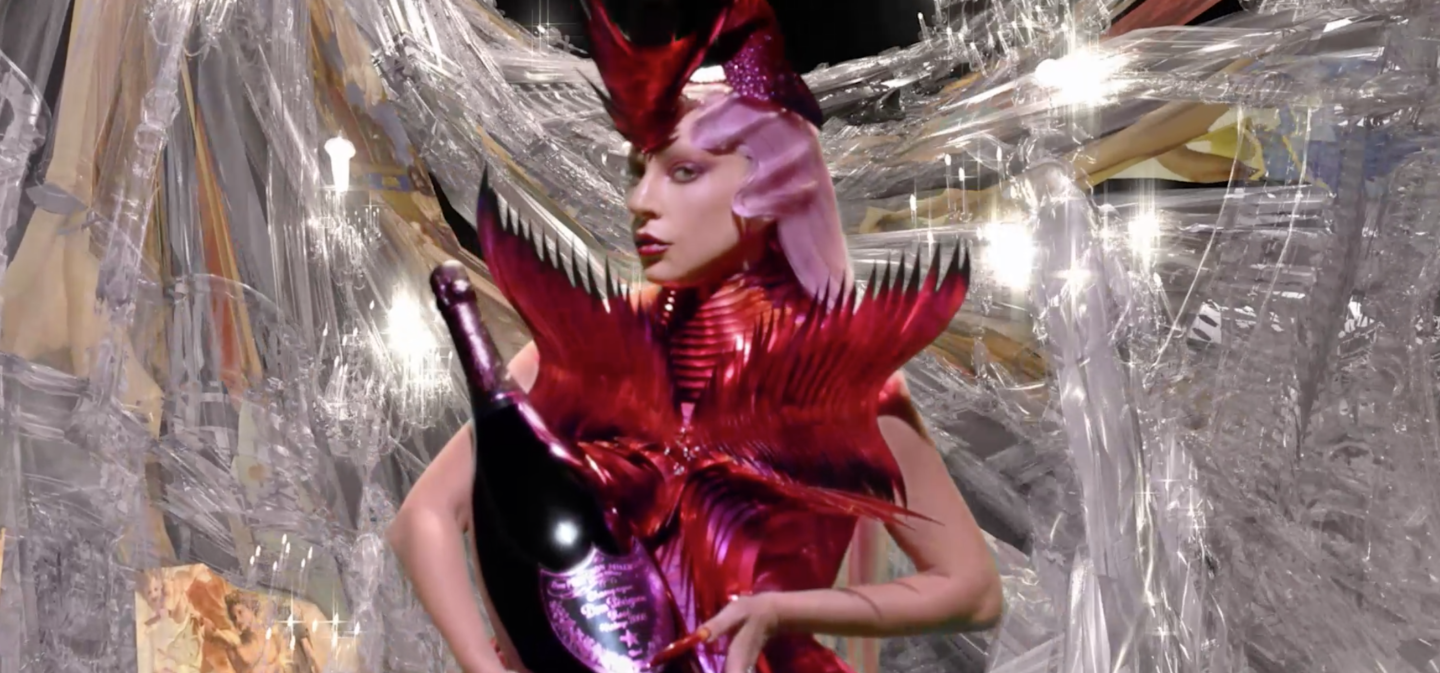While some brands are more strangling than others when it comes to “getting in bed together,” Dom Pérignon is presumably “laid-back” (relatively speaking) with regard to letting someone like Lady Gaga create a commercial for it under the guise of being “art.” Yet that doesn’t make it any less of a brand—part of the larger corporation that is LVMH. And yes, while that might mean “luxury” in a way that Oreo (the other product Gaga has been recently fond of being a shill for) never could, it is still a corporation nonetheless. The objective always being: make more money.
We can pretend till kingdom come that certain enterprises are “edgier” and “more open” than others, but there’s always going to be pushback on just how “creative” (read: too free-thinking and controversial) a spokesperson can be. Even when it is the reportedly avant-garde Lady Gaga, who would like us to believe she has all the control…even when a major outside juggernaut is involved.
Knowing that synergy is a key part of merging “art” and commerce, Gaga was sure to take advantage of wielding another track from her Chromatica album for this promotion. With no tinge of irony, she opted for “Free Woman” (ha, “free” indeed) to drive home the fact that she’s got “total agency” in deciding which “original” and “inventive” decisions are made. You know, like what couture to wear and the font that should go on the bottle. So innovative.
And as we watch Gaga look at herself inside of a crystal ball (P.S. Britney Spears already pulled this fortune teller’s motif long ago in a 2010 commercial for her Radiance perfume—and so did Madonna, for that matter, in the “Who’s That Girl” video—incidentally, there’s a classic scene in that movie where she appears all Marilyn Monroe’d out while holding a bottle of Dom), we have to ask: how exactly is this “creative”? After all, the tagline that concludes the one-minute clip assures us that, “Creative freedom is power.” Except what “power” (from an unmitigated creative standpoint) is Lady Gaga getting out of this other than some cash, probably a lifetime supply of Dom Pérignon and “feeling good” about her altruism in giving the profits to her Born This Way Foundation? And yet, how can anyone “feel good” about selling a product for thousands upon thousands of euros just because the bottle design is “limited edition”? Regardless of it “all” being for charity or not.
Twirling around in a mirrored room and holding the giant “sculpture” (as they keep trying to “art-ify” what is, in the end, still just a bottle), Gaga looks at us somewhat ashamedly through the camera—perhaps knowing that even she isn’t going to get away with this. Then come the lyrics, “This is my dance floor/I fought for.” If what is meant by that is: skanking it up on the Lower East Side for a while before landing a record deal in a manner that came much more easily to her than to others.
As the commercial (not “short film,” as one could envision Gaga trying to call it) progresses, she soon tries to “camp it up” further by relying on the “Italian aesthetic” her creative director, Nicola Formichetti, does his best to provide her with via carnevale-esque shadows and merriment. The shadowy figures—bedecked in their witch-like pointy hats, in fact, make us want to ask, “Is this a party or a ritual celebration of Rosemary’s baby?”
More crystal ball flourishes ensue as Gaga twirls her hands (giving the woman with the longest nails in the world a run for her money) at the end before performing a bit of alchemy that turns the crystal back into the bottom line: let’s sell some fucking Champagne. Lest one need to be reminded after years spent being paid for their art: there is absolutely no true creative freedom involved when a need to generate sales comes into play. But again, Gaga probably had a higher budget (so, in that sense, more freedom) for this than she did for her Oreo collab.
Try as she might to prove with each new arbitrary brand she decides to align herself with that what we’re seeing is the “power” of “creative freedom,” all we’re actually witnessing is Gaga make more money from product promotion. What’s more, we’re a long way from the original Dom Pérignon, the Benedictine monk after whom the brand is named. Unlike the tenets of a monk, however, this particular Dom Pérignon’s bottom line is just the same as Gaga’s: let’s profit as much as we can from our “art.” For isn’t the modern manifesto of the religion called capitalism just as Beyoncé (a Lady Gaga collaborator herself) billed it?: “Best revenge is your paper.”





















